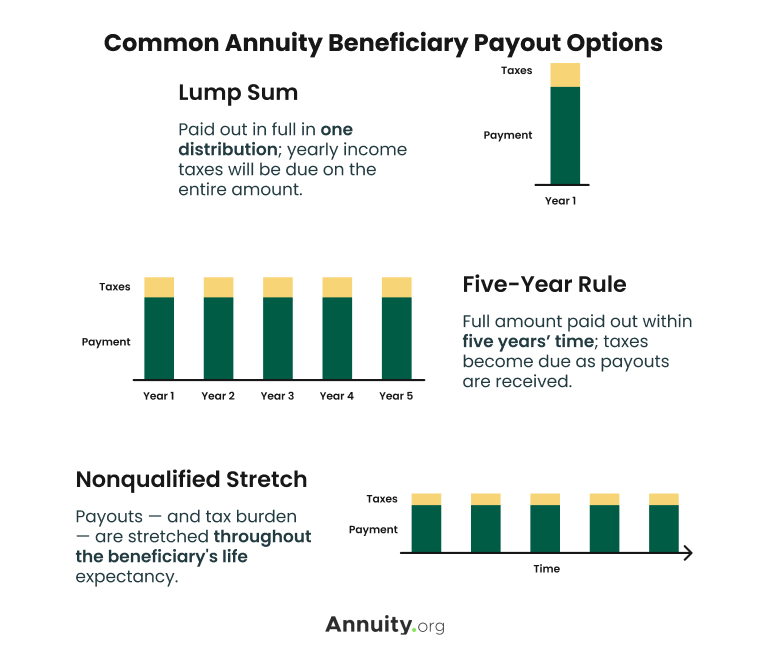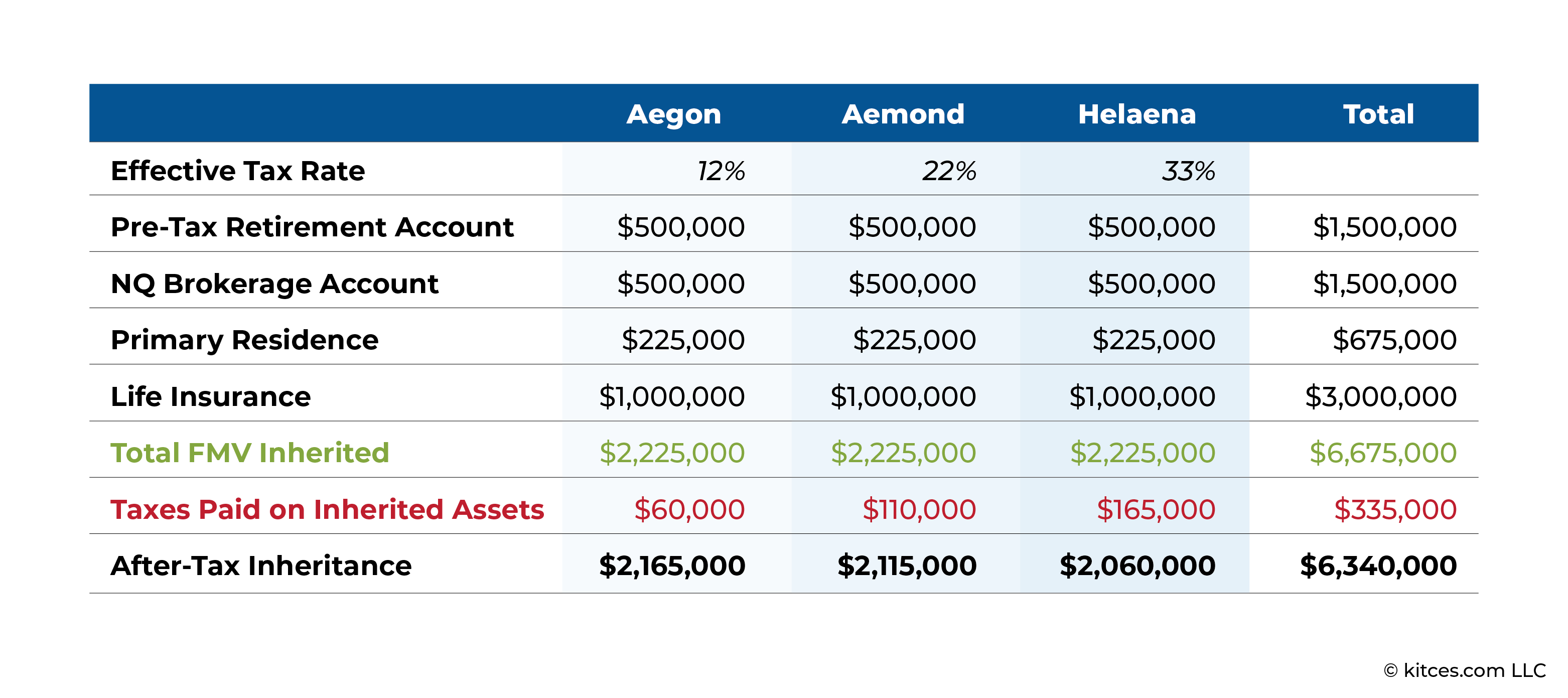All Categories
Featured
Table of Contents
This five-year general regulation and 2 complying with exemptions apply only when the proprietor's fatality triggers the payout. Annuitant-driven payouts are talked about listed below. The very first exemption to the general five-year policy for private beneficiaries is to accept the survivor benefit over a longer period, not to go beyond the anticipated lifetime of the recipient.
If the beneficiary elects to take the death advantages in this approach, the benefits are tired like any type of other annuity payments: partially as tax-free return of principal and partly taxable earnings. The exemption ratio is discovered by using the dead contractholder's cost basis and the expected payouts based on the beneficiary's life span (of shorter duration, if that is what the recipient selects).
In this approach, in some cases called a "stretch annuity", the beneficiary takes a withdrawal annually-- the needed quantity of every year's withdrawal is based upon the same tables made use of to determine the required distributions from an individual retirement account. There are two advantages to this technique. One, the account is not annuitized so the recipient maintains control over the money value in the agreement.
The 2nd exemption to the five-year regulation is available just to a surviving partner. If the designated beneficiary is the contractholder's partner, the spouse may choose to "enter the footwear" of the decedent. Basically, the spouse is dealt with as if he or she were the proprietor of the annuity from its creation.
Fixed Annuities beneficiary tax rules
Please note this uses only if the partner is called as a "designated beneficiary"; it is not available, as an example, if a depend on is the beneficiary and the spouse is the trustee. The general five-year rule and the 2 exemptions just use to owner-driven annuities, not annuitant-driven contracts. Annuitant-driven contracts will pay death benefits when the annuitant dies.

For purposes of this conversation, assume that the annuitant and the owner are various - Annuity contracts. If the agreement is annuitant-driven and the annuitant passes away, the fatality causes the survivor benefit and the beneficiary has 60 days to decide how to take the survivor benefit subject to the terms of the annuity agreement
Likewise note that the alternative of a spouse to "enter the footwear" of the proprietor will not be available-- that exception uses only when the owner has passed away but the owner really did not die in the circumstances, the annuitant did. If the beneficiary is under age 59, the "death" exception to prevent the 10% fine will not use to an early distribution once again, because that is readily available just on the death of the contractholder (not the fatality of the annuitant).
In fact, many annuity business have inner underwriting policies that refuse to provide agreements that call a various owner and annuitant. (There may be weird scenarios in which an annuitant-driven contract fulfills a customers special demands, yet typically the tax disadvantages will exceed the advantages - Annuity income stream.) Jointly-owned annuities may present comparable problems-- or a minimum of they may not offer the estate planning function that jointly-held properties do
Therefore, the survivor benefit must be paid out within five years of the initial proprietor's death, or based on the 2 exemptions (annuitization or spousal continuation). If an annuity is held jointly between an other half and spouse it would certainly appear that if one were to pass away, the other can merely continue ownership under the spousal continuance exemption.
Presume that the spouse and partner called their child as beneficiary of their jointly-owned annuity. Upon the death of either owner, the company needs to pay the death advantages to the boy, who is the recipient, not the surviving spouse and this would most likely beat the owner's purposes. Was wishing there might be a system like setting up a beneficiary Individual retirement account, however looks like they is not the case when the estate is arrangement as a recipient.

That does not determine the kind of account holding the acquired annuity. If the annuity was in an inherited individual retirement account annuity, you as administrator need to have the ability to assign the acquired IRA annuities out of the estate to acquired IRAs for every estate recipient. This transfer is not a taxable occasion.
Any type of distributions made from acquired Individual retirement accounts after project are taxed to the recipient that received them at their common earnings tax obligation price for the year of distributions. But if the acquired annuities were not in an IRA at her death, after that there is no way to do a straight rollover right into an inherited IRA for either the estate or the estate beneficiaries.
If that happens, you can still pass the distribution with the estate to the individual estate beneficiaries. The tax return for the estate (Kind 1041) can include Form K-1, passing the revenue from the estate to the estate recipients to be tired at their private tax rates as opposed to the much greater estate revenue tax rates.
Tax implications of inheriting a Deferred Annuities

: We will certainly create a strategy that consists of the ideal items and features, such as boosted death advantages, premium benefits, and permanent life insurance.: Receive a customized method made to maximize your estate's worth and decrease tax obligation liabilities.: Implement the chosen strategy and obtain recurring support.: We will certainly aid you with establishing up the annuities and life insurance policy plans, providing continual advice to guarantee the strategy remains reliable.
Nonetheless, should the inheritance be considered as an earnings related to a decedent, then tax obligations may use. Usually talking, no. With exemption to retirement accounts (such as a 401(k), 403(b), or individual retirement account), life insurance policy earnings, and cost savings bond rate of interest, the recipient typically will not have to bear any kind of income tax obligation on their acquired wealth.
The quantity one can acquire from a trust fund without paying taxes depends on various factors. Individual states may have their own estate tax obligation guidelines.

His objective is to simplify retired life planning and insurance coverage, making sure that clients comprehend their options and protect the most effective protection at unequalled rates. Shawn is the founder of The Annuity Specialist, an independent on-line insurance firm servicing consumers throughout the United States. Via this system, he and his team aim to get rid of the guesswork in retirement planning by assisting individuals find the most effective insurance policy protection at the most affordable rates.
Table of Contents
Latest Posts
Analyzing Strategic Retirement Planning A Closer Look at Fixed Indexed Annuity Vs Market-variable Annuity Defining the Right Financial Strategy Benefits of Choosing the Right Financial Plan Why Choosi
Understanding Tax Benefits Of Fixed Vs Variable Annuities Everything You Need to Know About Deferred Annuity Vs Variable Annuity What Is What Is A Variable Annuity Vs A Fixed Annuity? Pros and Cons of
Highlighting the Key Features of Long-Term Investments A Closer Look at How Retirement Planning Works Breaking Down the Basics of Fixed Index Annuity Vs Variable Annuities Features of Smart Investment
More
Latest Posts